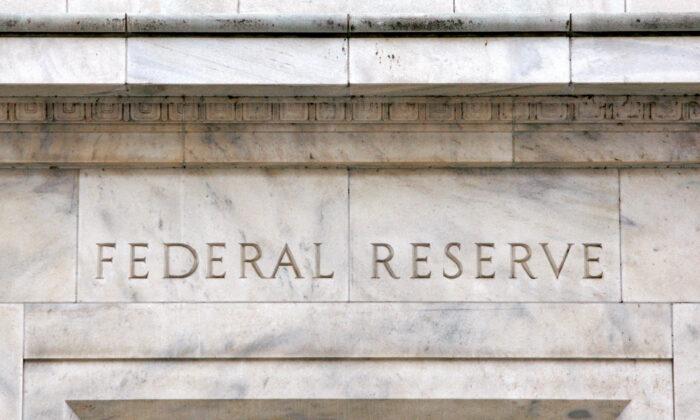Higher interest rates can have undesirable consequences, including costlier borrowing and an uptick in unemployment. They can also contribute to a bearish sentiment among investors, thus driving down stock prices.
In this article, we’ll discuss how the Fed makes its decisions regarding interest rates and whether we think it’s likely the Fed will raise rates in the coming months.
- The Fed has raised rates by almost 500 basis points over the last year.
- The Fed may not begin to ease rates until later this year.
- As experts debate whether the U.S. economy will enter a recession, you can think of ways to protect your finances from an economic downturn.
Why Are They Raising Rates?
Fed chair Jerome Powell is adamant about controlling inflation, even if it hurts the economy in the short run. The week before its most recent rate hike in March, the Fed saw data from the Consumer Price Index. The CPI showed prices had increased 0.4 percent, well below the Fed’s ideal inflation rate (2 percent) but still high enough to incentivize the Fed to raise rates a quarter of a percent.The CPI’s February data showed prices were up 6.0 percent year-over-year, marking the eighth consecutive drop in year-over-year interest rates. This is a positive sign, as it shows inflationary pressure is slowly loosening, but this doesn’t mean the Fed will start lowering rates at its next meeting in May.
An inflationary environment can create a dangerous spiral where prices rise, leading to workers demanding higher wages. Employers then pass the cost of higher wages to consumers, pushing the cost of goods and services higher, and the cycle repeats.
The Fed wants to avoid that situation. When it raises interest rates, borrowing becomes more expensive. Thus, buying a house or car is costlier. Because the fed funds rate impacts the rate at which banks borrow from each other to meet reserve requirements, higher rates tend to push up interest rates on savings products. Banks want to encourage consumers to deposit their money into savings accounts as it lets them borrow less from each other.
The general result of higher interest rates is that people have less money they’re looking to spend, forcing businesses to decrease prices.
What Causes a Lowering of Rates?
The Federal Reserve lowers interest rates to encourage spending and investment. When the Fed lowers interest rates, borrowing becomes cheaper, and consumers and businesses spend more.Some segments of the economy are more sensitive to interest rate changes than others. The real estate market is the best example because most people borrow money to purchase a home.
Interest rate hikes make it more expensive to borrow to buy a home, which tends to cause a decline in sales. Conversely, when rates drop, borrowing money to buy a home becomes cheaper, so housing sales increase.
Recent History of Easing and Lowering Rates
Rate cuts have been modest in recent history compared to earlier periods, such as the 1990s. However, interest rates haven’t exceeded 10 percent since then, so there hasn’t been as much to cut.The most significant rate cuts in recent years came with the Great Recession and the dot-com bubble—rates dropped by about 5 percent in each case. The COVID-19 Recession led to the Fed lowering rates from just over 2 percent to near-zero.
There were slight drops from the mid-1990s until 2000, but none were especially notable. However, there was a significant drop in rates in the early 1990s. Back then, rates dropped from nearly 10 percent to about 2.5 percent within a few years.
How Does This Impact My Portfolio?
The general rule is that rate cuts are good for stock portfolios, and rate hikes are bad for them. After all, rate cuts tend to mean more economic activity, while rate hikes mean less economic activity. For example, the S&P 500 dropped 1.6 percent when the Fed announced the latest rate hike.Remember that the economy is complex, so we cannot simply say a rate cut will push stocks higher while a rate hike will make them tumble. Many other factors can influence the economy and, thus, stocks.
The war between Russia and Ukraine is a recent example of this. It has led to an energy crisis that has strained the global economy. Thus, there is no guarantee that a rate cut will boost your stock portfolio, especially when the world is experiencing a crisis of this magnitude.
The relationship bonds have with stocks may also be a factor. Bond yields increase as interest rates rise, making stocks less appealing. At the same time, the price of existing bonds usually decreases when rates increase. This is because bonds typically have a fixed rate. Existing bonds have comparatively low rates if rates go higher, making them less enticing investment products and driving down their price.
What Will the Fed Do in May?
Data from price indexes influence the Fed’s decision to raise or lower rates. The Fed prefers to use the Personal Consumption Expenditures (PCE) price index to gauge inflation. Still, data from the Consumer Price Index (CPI) is helpful to consumers in predicting what the Fed will do.The next PCE release is scheduled for April 28, 2023. This will come immediately before the Fed’s meeting between May 2 and 3. The next CPI report, meanwhile, will be released on May 10. The Fed needs to determine if its rate hikes are affecting the economy as intended, which inflation data can elucidate.
What to Do if There’s a Recession
Many people fear that rate hikes and downward pressure on the economy will lead to recession, even as the Fed hopes to achieve a “soft landing.” Multiple factors go into calling a recession, and rate hikes don’t automatically translate to one.In the event of a recession, there are specific actions you can take as a consumer to protect your finances. One is to consider your spending habits and make a budget tailored to getting what you need and minimizing what you can go without. Consider savings products with high interest rates or stocks in sectors that aren’t as influenced by decreased public demand (utility companies, groceries, discount retailers).
The Bottom Line
In the current economic environment, the Federal Reserve is determined to bring inflation under control. That means aggressive rate hikes until the economy has cooled off sufficiently. Many economists believe rate hikes will stop by this summer, and rate cuts could happen as soon as the fall of 2023.While the Fed will eventually cut rates, stock market investors should prepare to weather the storm ahead. Learn about ways you can protect your money when rates are high, and think about saving more of your money while rates on savings products are high.






